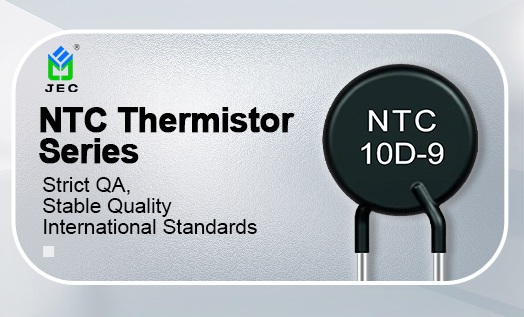An electric motor is a device that converts electrical energy into mechanical energy, providing power for the operation of electronic products. It is used in various devices and machines such as household appliances, industrial production lines, and transportation vehicles.
During operation, electric motors generate heat due to factors like friction and current flow through components such as windings and bearings. If this heat is not dissipated promptly, the motor’s temperature will continue to rise, potentially leading to burning out or damage.
To prevent such occurrences, thermistors come into play.
A thermistor, as the name suggests, is a type of resistor whose resistance changes with temperature.
Unlike regular resistors used for fixed resistance values or current limiting, thermistors serve as temperature sensors, converting the physical quantity of temperature into measurable electrical signals.
Based on the characteristic of resistance changing with temperature, thermistors are mainly categorized into two types: Positive Temperature Coefficient thermistors (PTC thermistors) and Negative Temperature Coefficient thermistors (NTC thermistors).
Positive Temperature Coefficient thermistors (PTC thermistors): As temperature rises, their resistance increases gradually. These thermistors are commonly used in scenarios like current limiting and overheat protection. For instance, the dry-burn protection mechanism in electric kettles utilizes the properties of PTC thermistors.
NTC thermistors: In contrast, the resistance of NTC thermistors decreases as temperature increases. Due to their high sensitivity and wide temperature measurement range, NTC thermistors are widely used in temperature measurement, environmental temperature compensation, and temperature control systems.
Why are thermistors necessary for electric motors? Because thermistors utilize temperature characteristics to measure temperature and enable temperature control.
When the temperature of an electric motor exceeds a set threshold, the resistance of the thermistor changes, triggering the operation of protective circuits. This action either cuts off the power supply to the motor or reduces its operating speed, thereby achieving overheat protection for the motor.
When using thermistors, it is crucial to ensure they are branded and of guaranteed quality, rather than low-quality thermistors without brand assurance. Otherwise, they may fail to protect the electric motor and could even accelerate damage to electronic products.
Dongguan Zhixu Electronics offers a complete range of supercapacitor models with guaranteed quality and worry-free after-sales support, certified under the ISO9001:2015 Quality Management System. Welcome to contact us for cooperation.
Post time: Oct-22-2024

